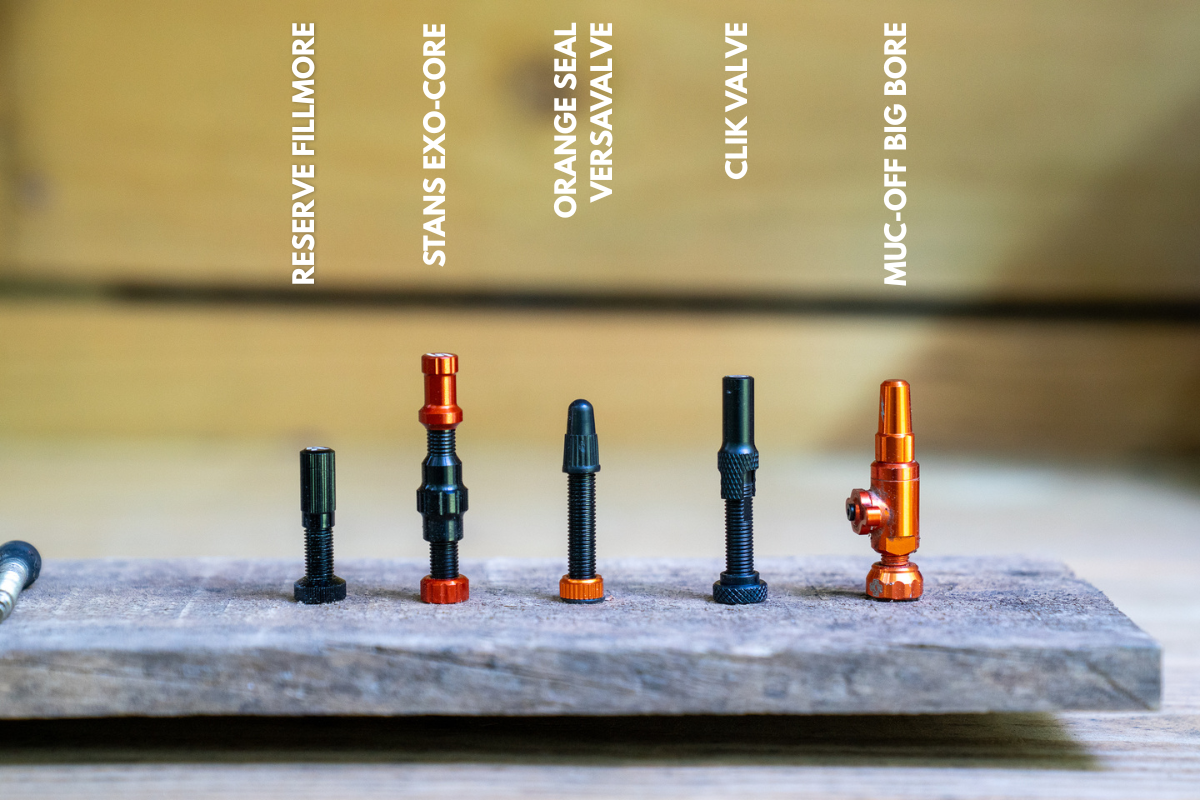
Just a few years ago, the Presta was the only choice for tubeless tire valves. Invented in the 1880s, Presta pre-dates even the Schrader, which was patented more recently… in 1893. Tubeless tire valves got a legit shakeup in 2020 when Santa Cruz patented the Reserve Fillmore valve, designed to increase airflow and decrease clogs.
Today, there are more than half a dozen tubeless tire valve designs on the market, each with its own pros and cons. Though your tubeless wheelset likely came with a set of valves, you might want to consider upgrading to one of these valves based on your setup.

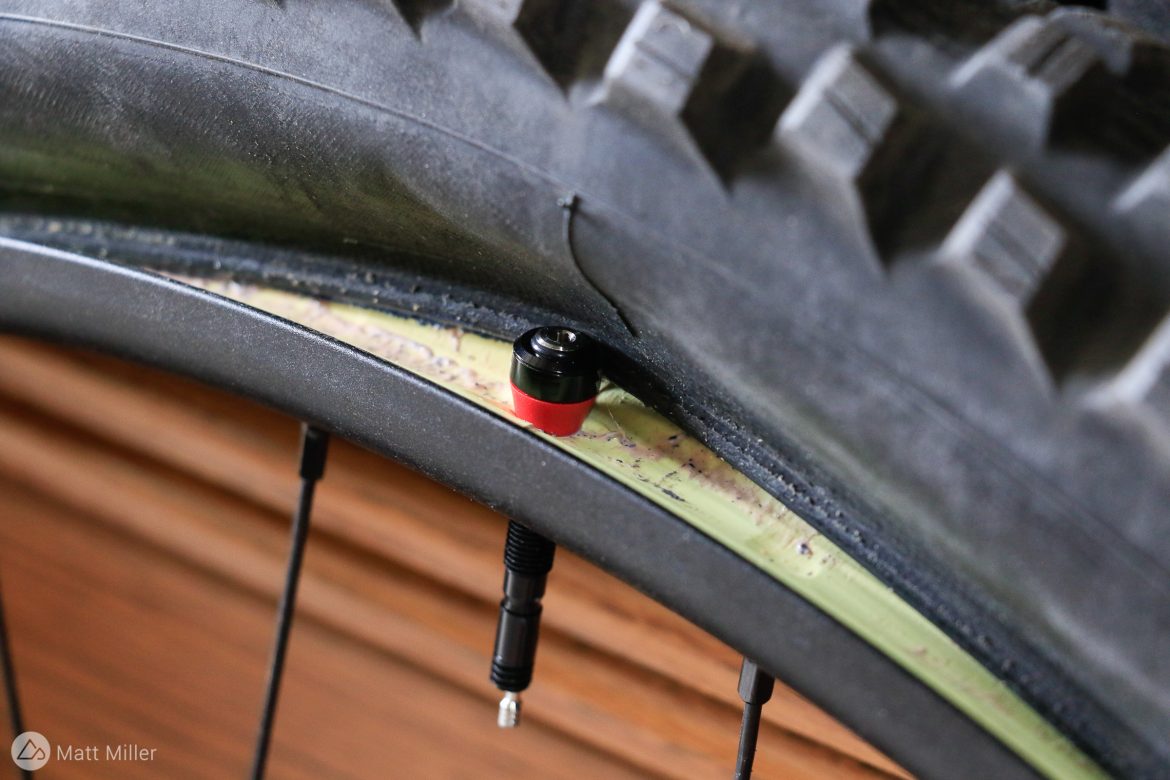
Reserve Fillmore
When the Reserve Fillmore designers set out to improve the Presta valve for use with tubeless tires, they were determined to increase airflow while eliminating the removable valve core that can get clogged or, worse, unscrewed accidentally. The result is a valve with an integrated stopper that extends beyond the base of the valve stem, freeing up precious space for air and sealant to flow.
Pros: high-flow design makes seating tires and adding sealant easy; standard valve stem diameter fits most rims.
Cons: non-repairable/replaceable valve core; requires the use of the valve cap to function; inserts may interfere.
Weight: 5.6g each
Price: $50 at Backcountry
Read Matt’s in-depth review of the Reserve Fillmore valve for more details.
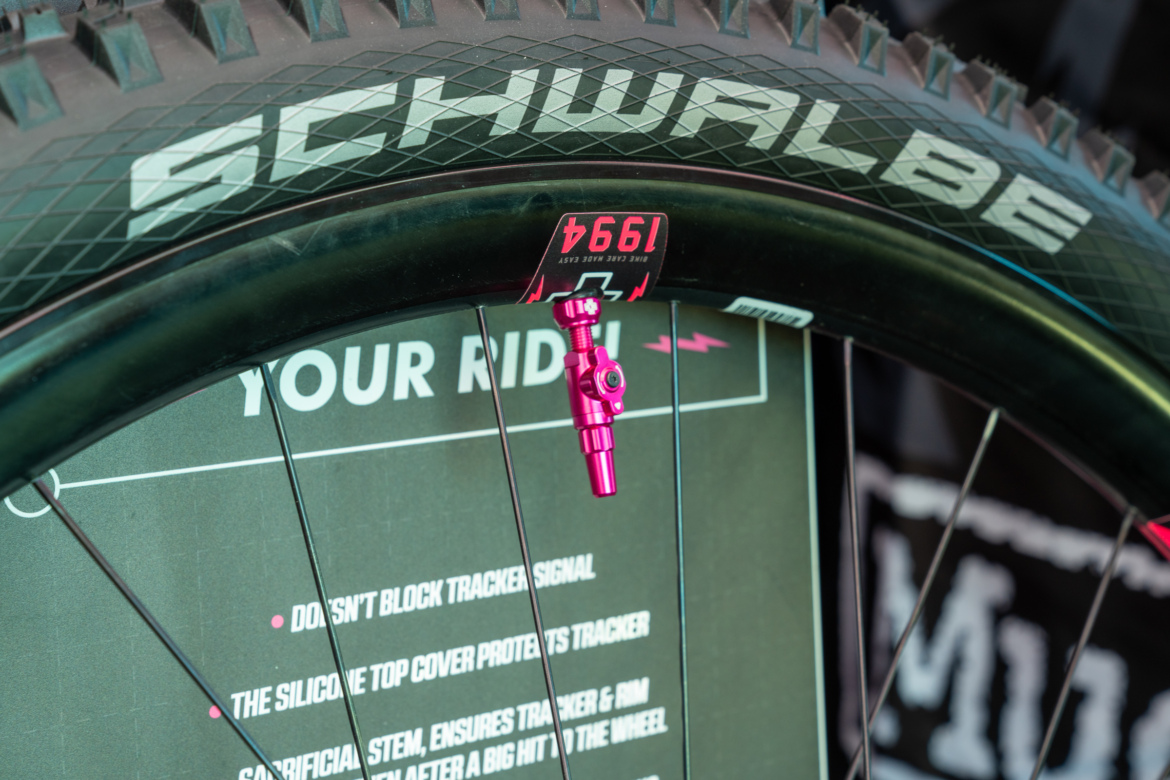
Muc-off Big Bore valve
I’ve been running Muc-off Big Bore valves for about a year off and on, and they’ve proven to be quite robust on the trail. The unique ball valve design basically operates like a giant on-off switch, making it easy to add a blast of air to your tire — or release all the air at once. The large-diameter stem guzzles sealant, which is especially helpful for thicker sealants like Muc-off’s own. The base of the stem features outlets at the bottom and sides, so it works well with inserts.
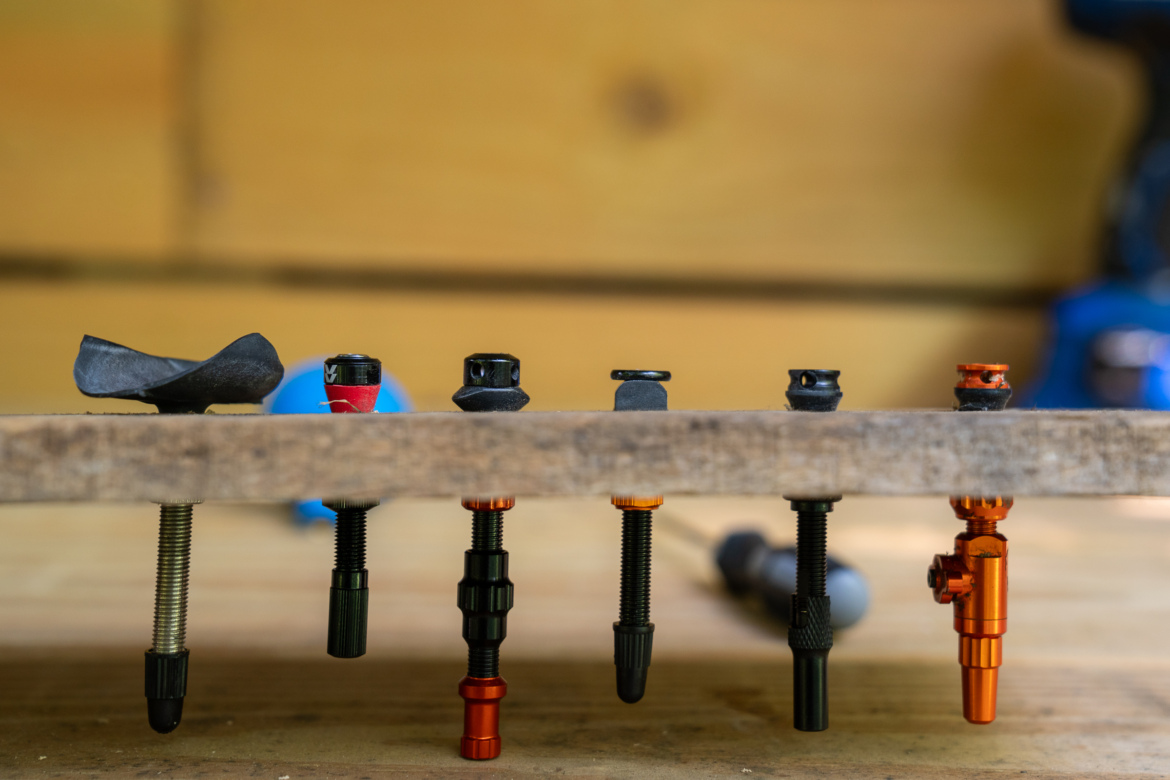
Pros: easy to fully open and close the valve for quick blasts of air; large diameter valve resists clogging; fits standard rim holes.
Cons: requires caution so you don’t accidentally release all the air when topping off; not rebuildable/repairable.
Weight: 9g
Price: $50 at Muc-Off and Amazon
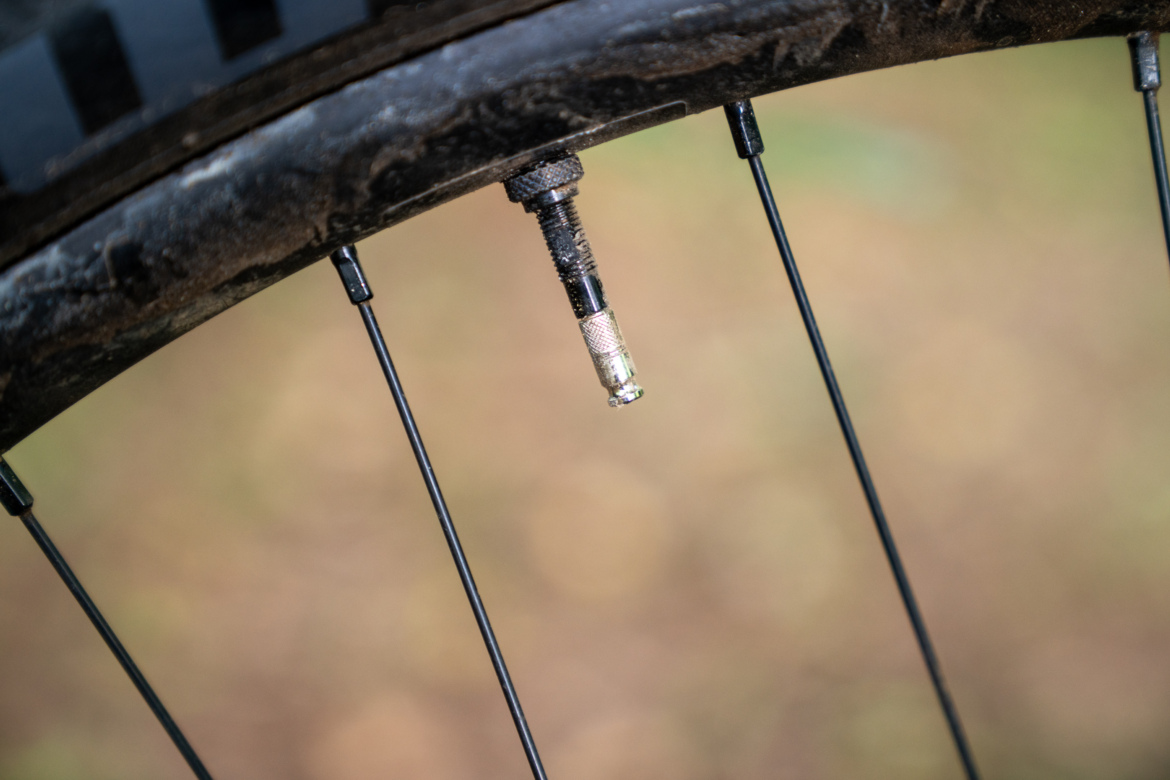
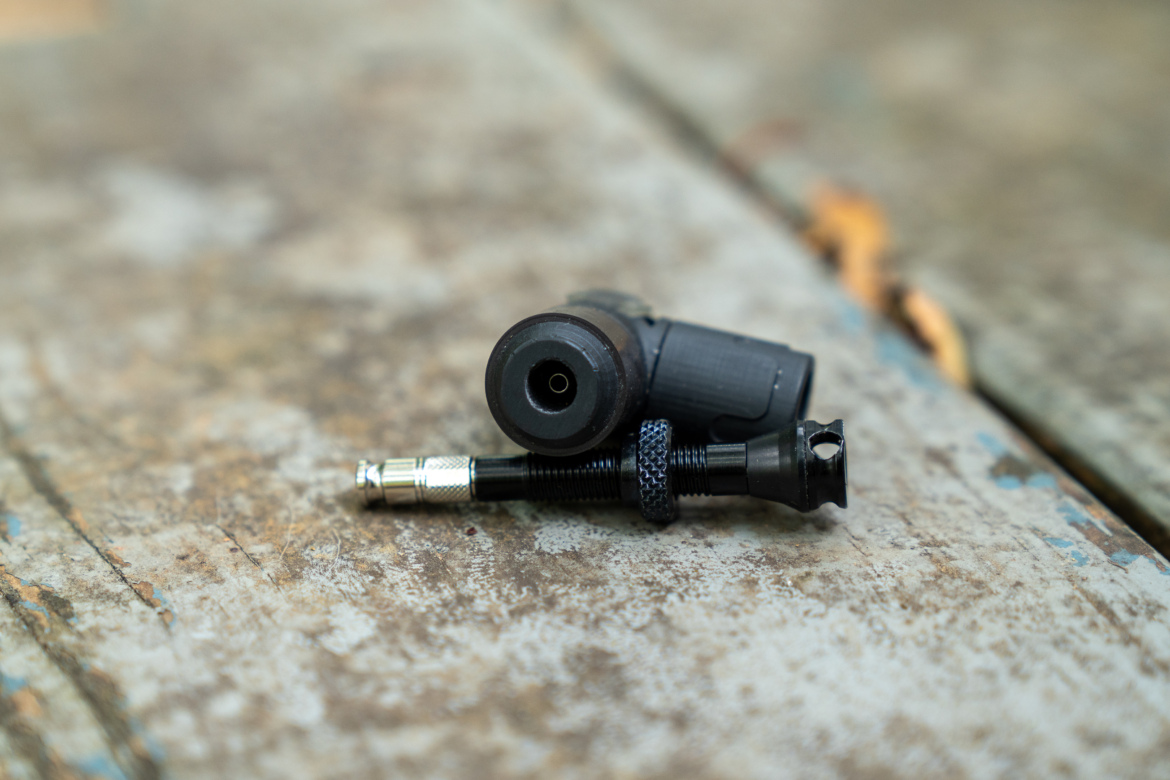
Clik valve
The Clik valve basically mashes up a Presta and a Schrader, and adds a little lip that allows you to snap a proprietary pump head onto the valve for a fast and secure fit. Otherwise, it works like most standard tubeless tire valves, with a removable core for adding sealant. You can order replacement Clik cores, and I’ve found that standard Presta cores fit as well. A normal pump will work with the Clik valve, but it doesn’t snap on like the proprietary Clik pump head.
Pros: simple pump attachment without the need to unscrew anything; removable/replaceable, though proprietary, valve core; base is designed to work with tire inserts; fits standard rim holes.
Cons: works best when used with a proprietary Clik pump head; you need to remove the core to add sealant.
Weight: 6.5g
Price: $36.95 for Wolf Tooth Tubeless valve kit with Clik
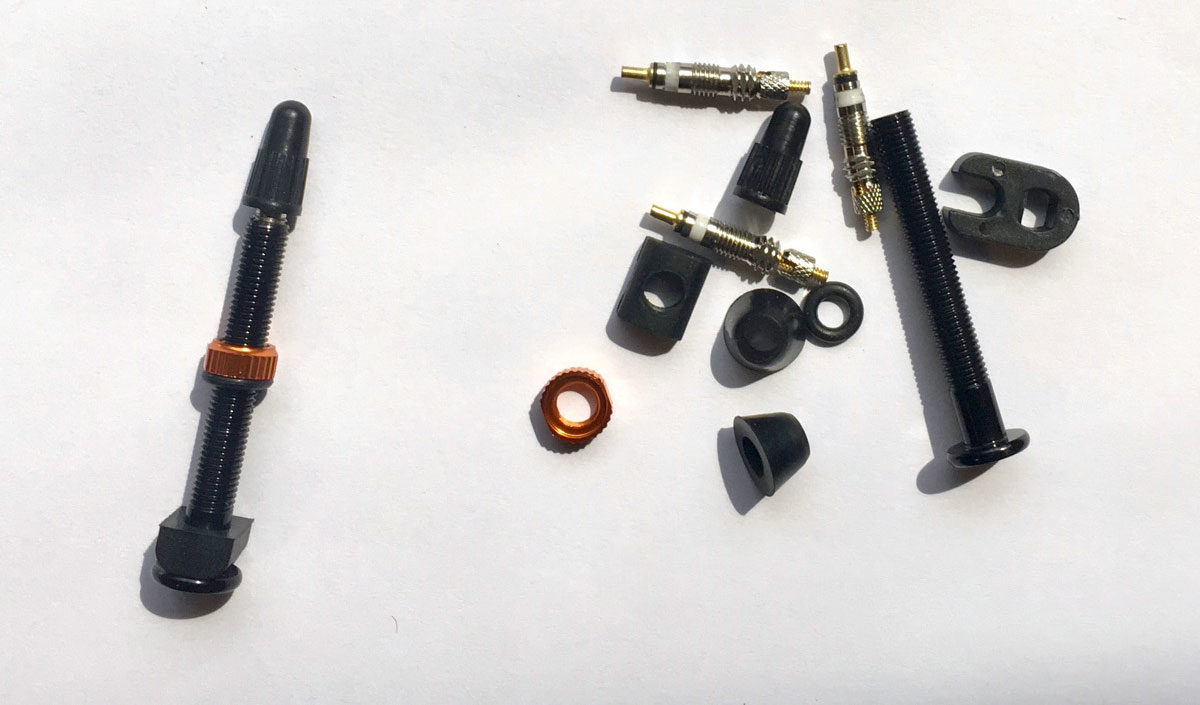
Orange Seal VersaValve
The Orange Seal VersaValve is likely the closest thing to the valves that came with your wheels, and that’s by design. The kit is meant to fit most rims thanks to a set of interchangeable washers that sit inside the rim channel for a secure fit.

Each of the valves pictured above came stock with a different wheelset, and as you can see, each has a different base designed to match the shape of a specific rim channel. While having the right base to fit your rims is ideal, I’ve found it usually isn’t necessary. Aftermarket valves generally use a funnel-shaped base that fits most rims.
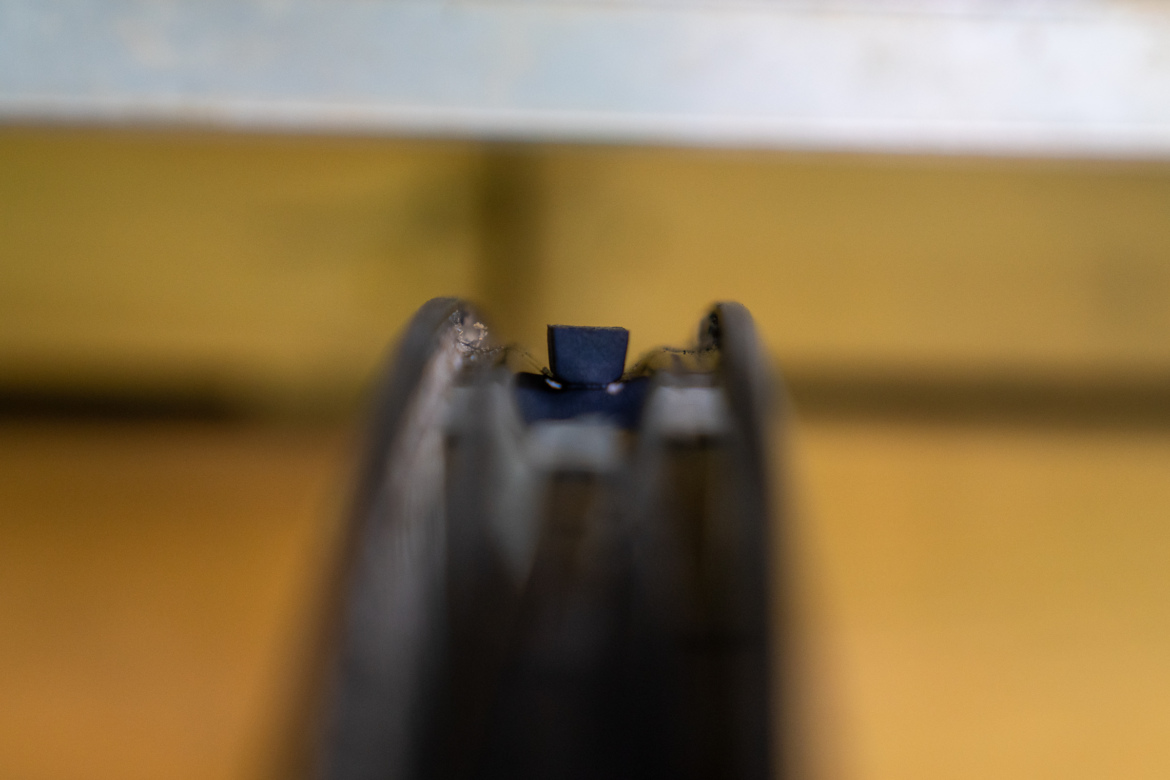
Pros: provides a secure fit for a variety of rim shapes; uses a standard replaceable Presta valve core and cap; standard diameter fits more rim valve holes.
Cons: low flow compared to others; not optimized for use with tire inserts; need to remove the core to add sealant.
Weight: 4.7g
Price: $26.39 at Orange Seal
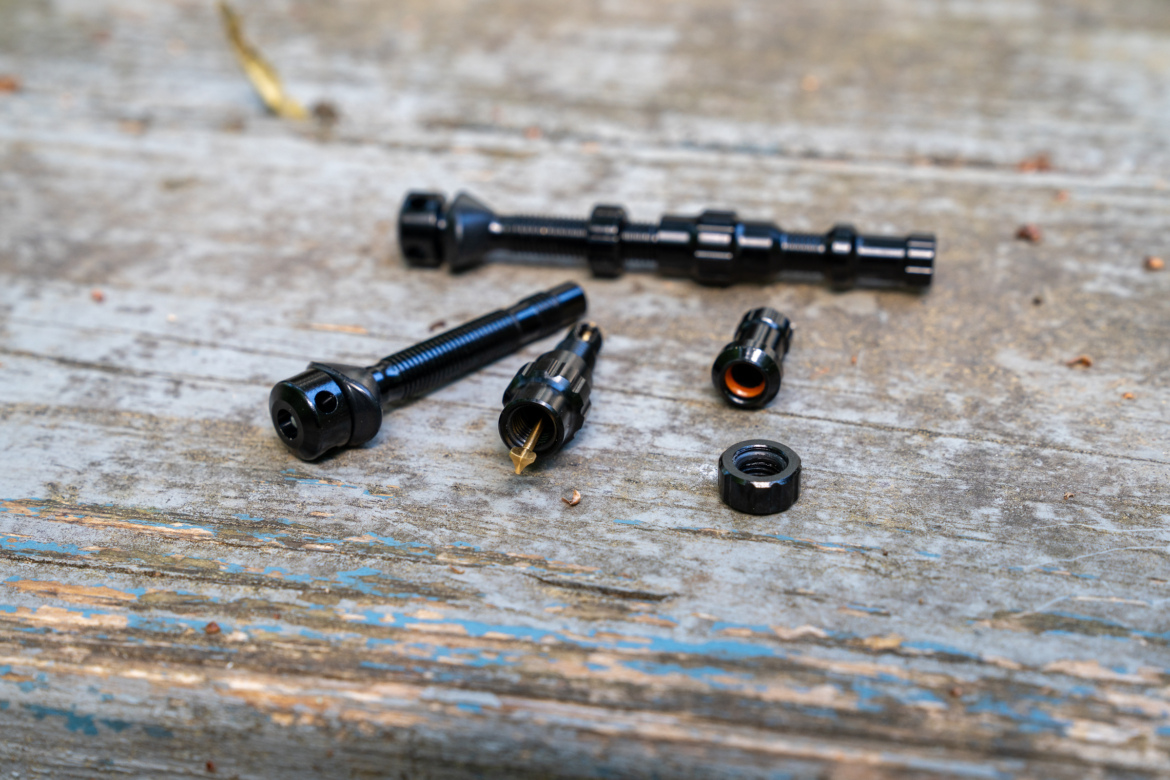
Stan’s Exo-Core
Stan’s Exo-Core delivers more airflow than a standard Presta valve, and the design makes it easier to clean sealant residue. Stan’s added a few other enhancements as well, like an unthreaded cap that pops on so you don’t accidentally unscrew the core when removing the cap. To bleed air, unscrew the valve an eighth of a turn, or a full turn to inflate. The base gets along with tire inserts and, naturally, it’s designed to make adding sealant quick and easy without the need to disassemble the valve.
Pros: easy to add sealant and clean out sealant buildup; robust design; standard cores fit the lower half of the valve assembly to be used in a pinch.
Cons: more complicated design than others; standard cores don’t fit.
Weight: 6.9g
Price: $55, currently on sale for $37.54 at Backcountry
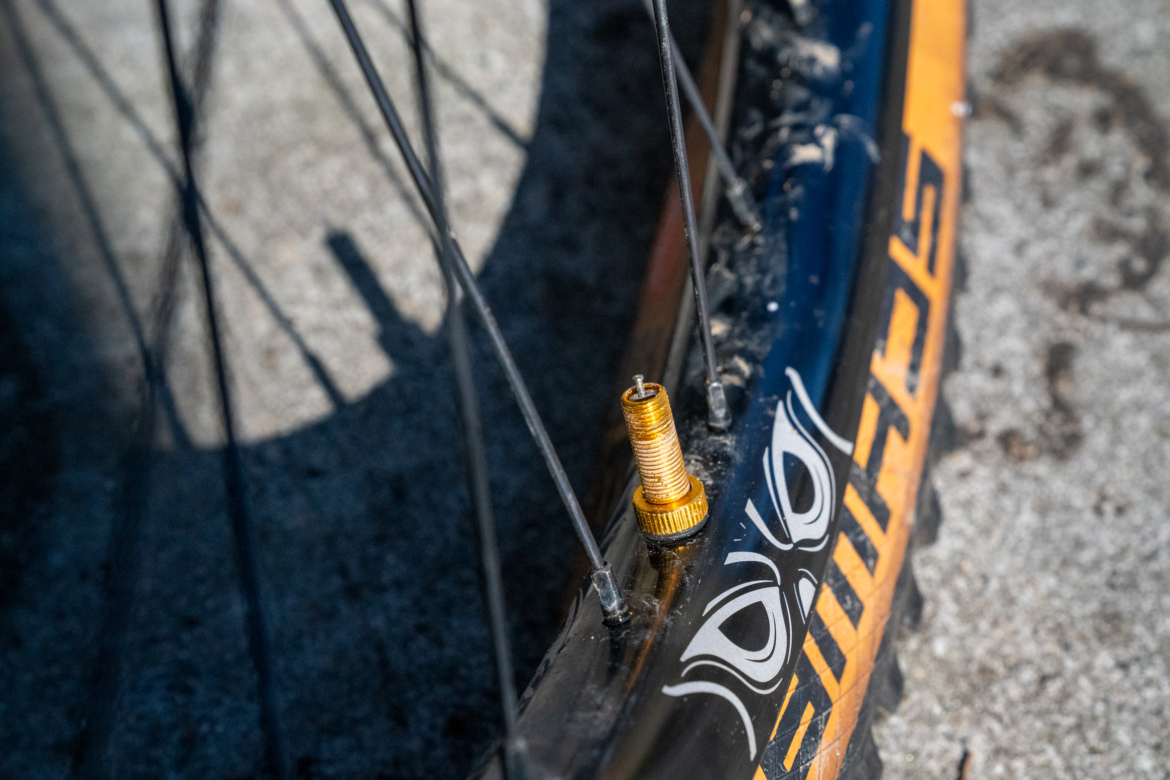
Miles Wide Ultimate Schrader Valves
Fat Schrader valves are more robust than Prestas, and Miles Wide uses this to their advantage. A removable valve core allows you to add sealant without breaking the bead, and because it’s a Schrader, the larger diameter makes it easier to add air and sealant.
Pros: large diameter; designed to work with inserts; compatible with gas station inflators; replaceable cores; available in a variety of colors.
Cons: requires a larger hole in your rims than a standard Presta valve.
Price: $35 from Miles Wide Industries
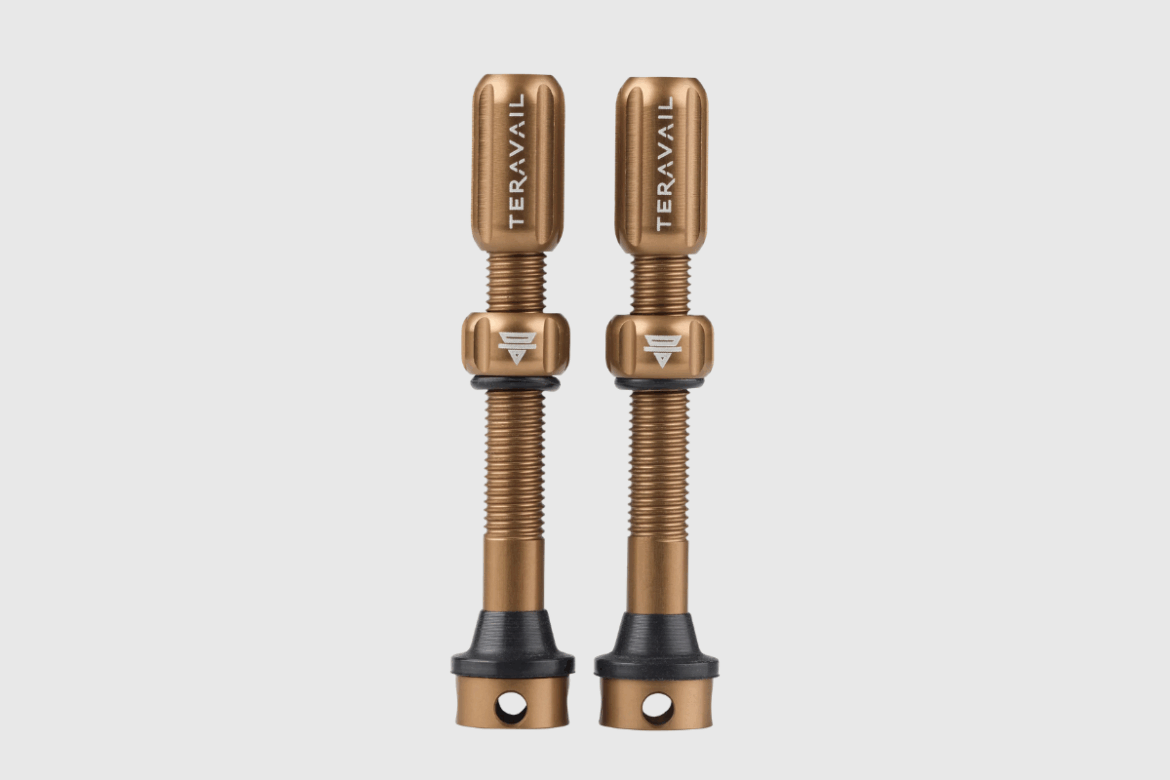
Teravail Tubeless Valve
Teravail tubeless valves are basically Prestas, but with modern touches like an insert-friendly base and a cap with a built-in valve core remover. Though we haven’t tested the Teravails, they appear to make use of a pretty safe design.
Pros: standard valve core; tire insert-friendly; fits standard rim hole.
Cons: need to remove the core to add sealant; standard Presta core limits air flow when seating a tire.
Price: $30 at Teravail
Other considerations
In addition to considering tire inserts and how you plan to inflate your tires, there are several other factors to consider when choosing a valve system.
Valve length
Some stems are offered in multiple lengths, depending on how deep your rims are. In general, mountain bike rims are pretty shallow compared to road bike rims, and it’s best to choose the shortest valve that will reach. And remember, longer valves are more prone to break, especially when it comes to mountain biking.
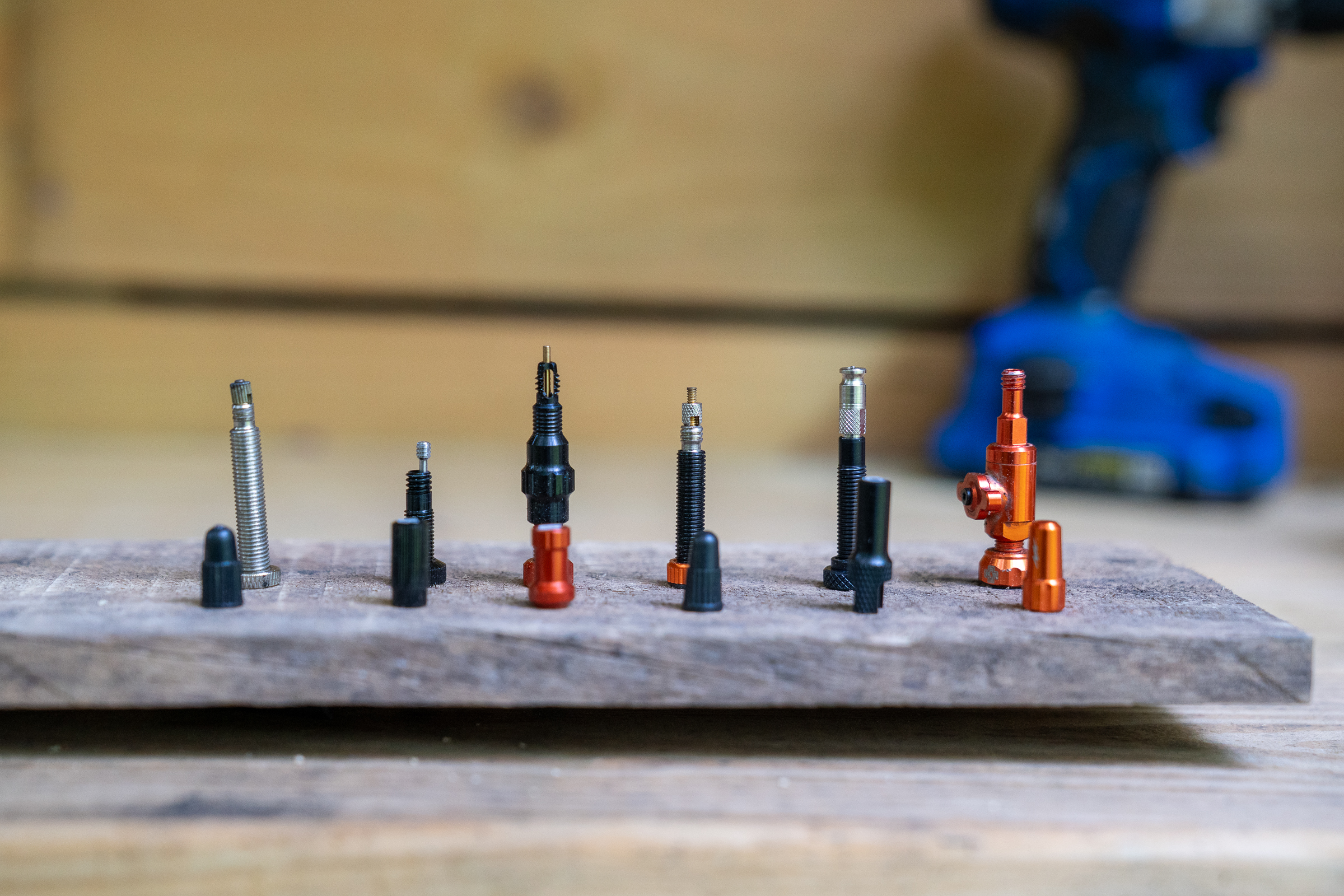
Caps
Do you use valve caps or leave them off? Personally, I don’t bother with the standard plastic caps because they add an extra step when it’s time to top off my tires. However, caps do protect vulnerable valve parts, especially if you’re running standard Prestas. Some valves, like Reserve Fillmores, require a cap to function. Others, like Clik valve, are well protected and benefit less from a cap.
What’s your valve choice? Tell us which tubeless tire valves you’re running in the comments below!


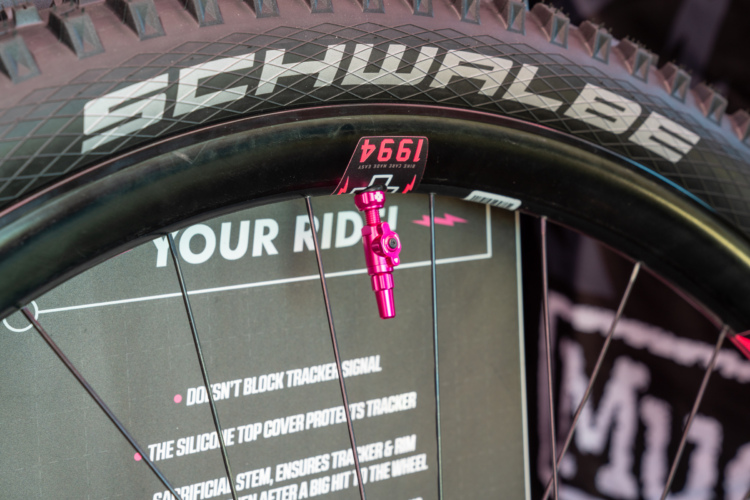

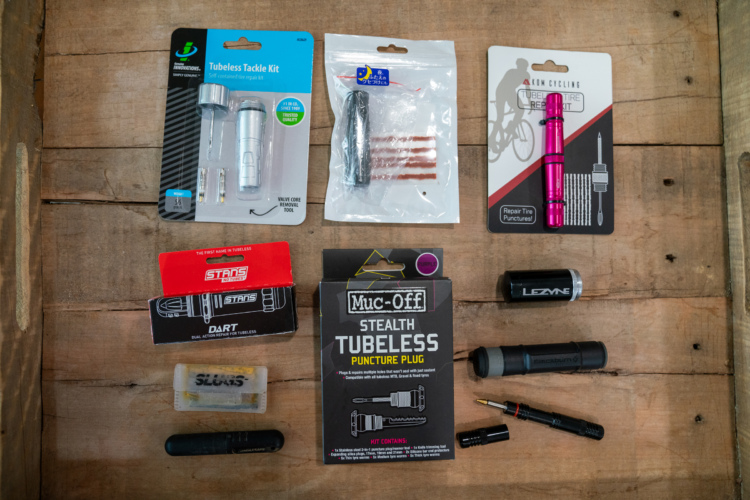


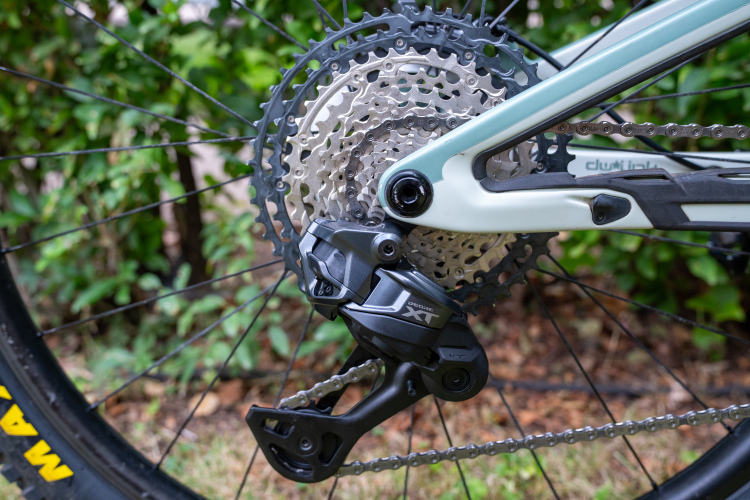

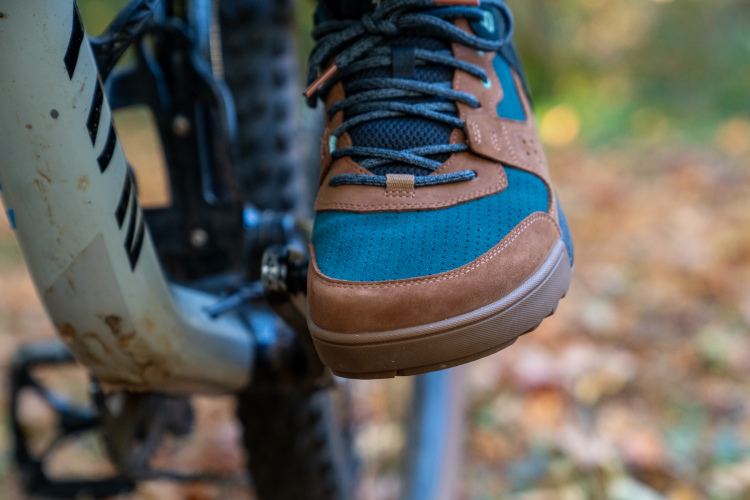

10 Comments
Jul 17, 2025
I like valve caps. In the unlikely event of a slowly leaking valve core (at least in the case of Schraeder valves), a well-fitted cap will keep the pressure up.
Jul 18, 2025
Jul 18, 2025
Jul 17, 2025
Jul 17, 2025
So it's exciting to see what the alternatives are, in this excellent article. Who will win in the marketplace?
Jul 17, 2025
Jul 17, 2025
Jul 21, 2025
Jul 20, 2025
Jul 17, 2025